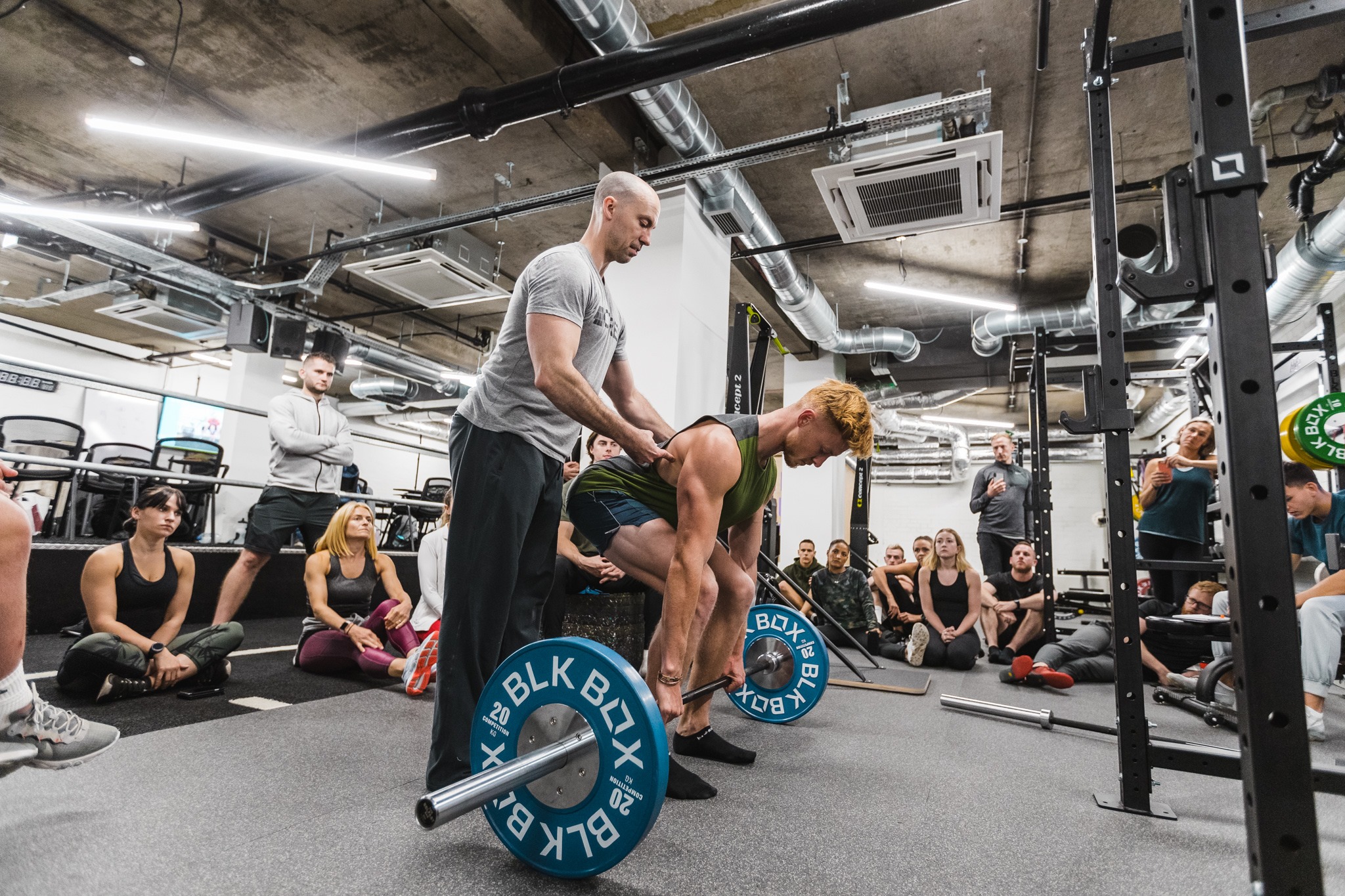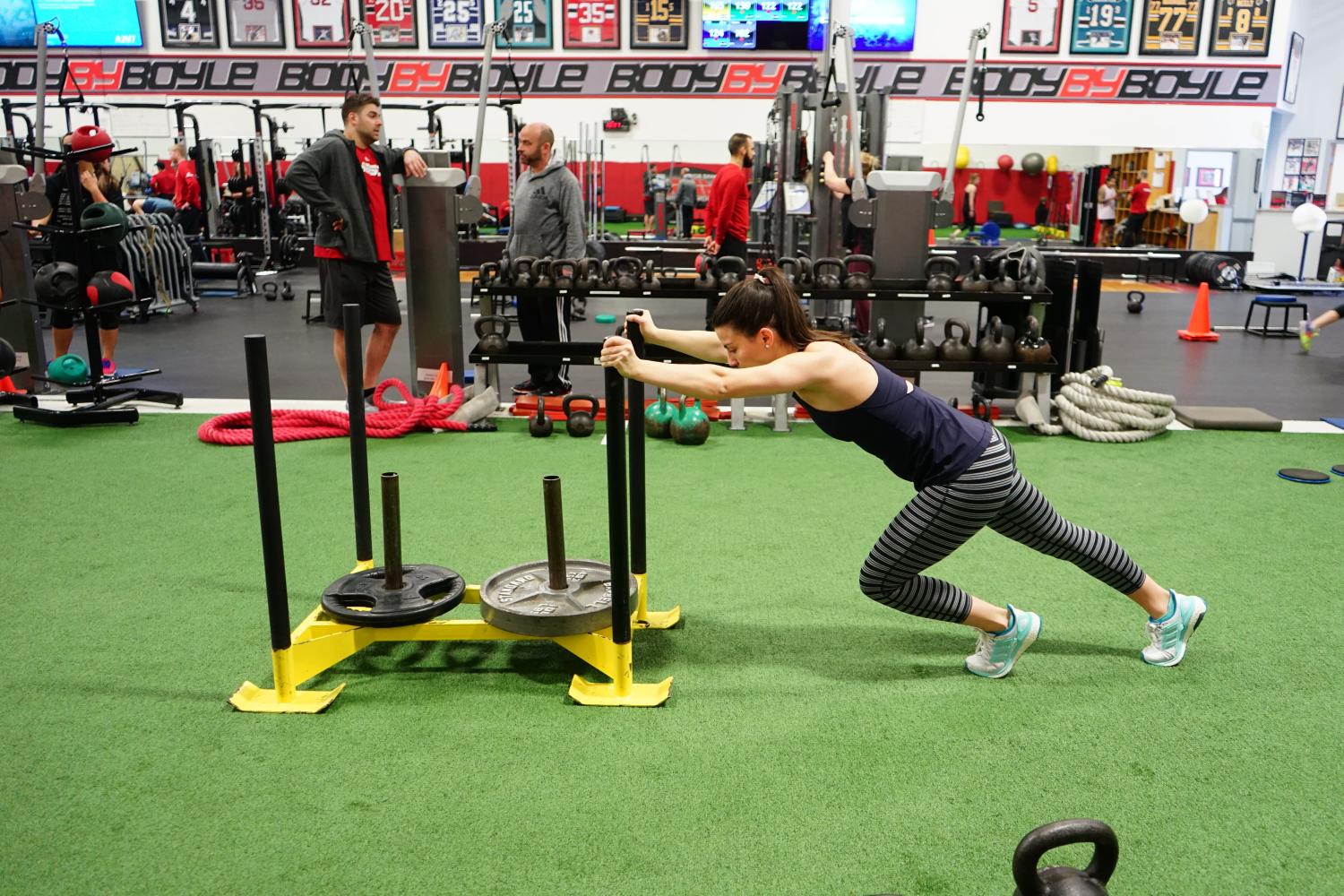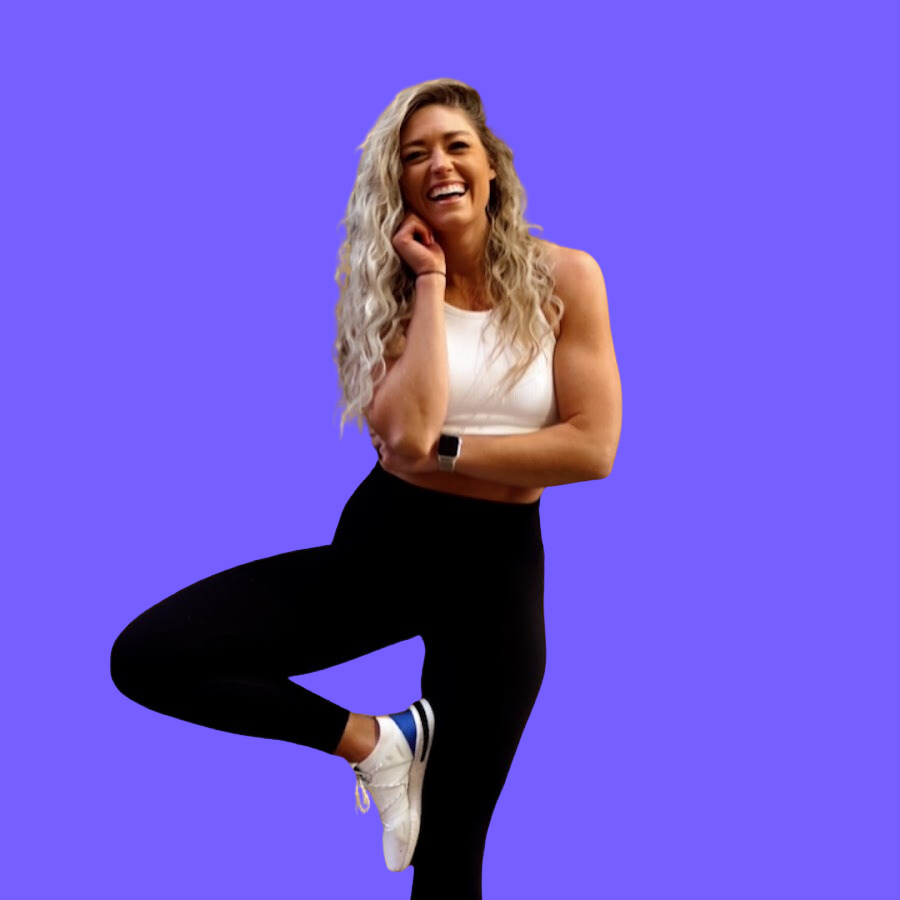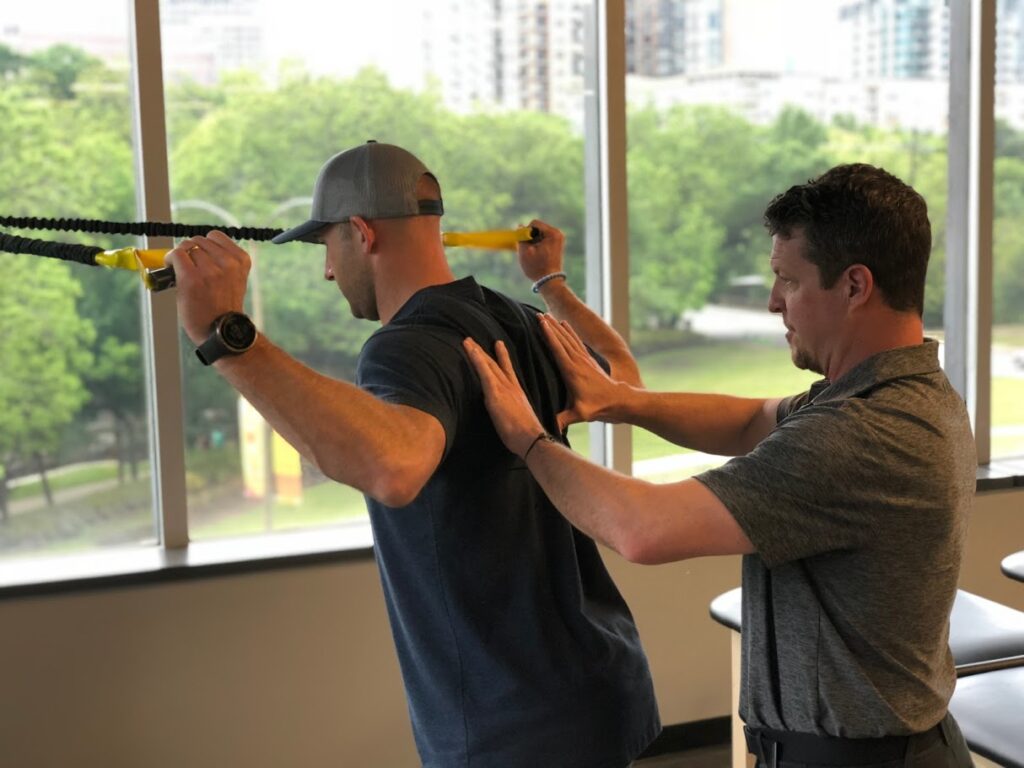Boutique Fitness Statistics + Trends (2025)
The boutique fitness industry has experienced remarkable growth, with key boutique fitness statistics highlighting the rise in popularity of specialized, community-driven boutique fitness studios that offer personalized, high-quality experiences catering to evolving boutique fitness trends and consumer preferences.

Read on for the most important boutique fitness industry trends and statistics you need to know, whether you want to start a boutique fitness studio, market a boutique gym, or just learn from the most successful boutique fitness studios. The boutique fitness industry has experienced a remarkable surge in popularity in recent years, transforming the landscape of the health and wellness sector and becoming a part of the ever-changing future of fitness.
These specialized, community-driven fitness studios have carved out a distinct niche, offering personalized, high-quality experiences that cater to the evolving preferences of fitness enthusiasts. Read this boutique fitness industry report to be better informed.
The growth of boutique fitness can be attributed to a variety of factors, including the increasing demand for more engaging and immersive workout experiences, the rise of fitness-conscious millennials and Gen Z, and the industry’s ability to foster a sense of community and belonging among its members. As the industry continues to evolve, it is essential to examine the key boutique fitness industry statistics that highlight its success and the factors driving its expansion as well the increasing boutique fitness profitability.
Read this boutique fitness report to understand the boutique fitness industry growth trends that you can take advantage of as a fitness professional. Below are the most important boutique fitness statistics that showcase the industry’s remarkable trajectory, its impact on the broader fitness landscape, and the factors that contribute to its continued growth and success. These insights will provide a deeper understanding of the boutique fitness phenomenon and its implications for the future of the health and wellness industry.

Top 10 Boutique Fitness Statistics
The boutique fitness industry has seen significant growth in recent years, with the global market now valued at over $49 billion USD. Here are the top 10 boutique fitness statistics and boutique fitness trends that highlight the rise and success of boutique fitness:
- 67% of boutique fitness users cite social interaction as one of their top reasons for attending classes. This demonstrates the importance of community and connection in the boutique fitness experience.
- There was a 245% growth in boutique fitness studio users from 2013 to 2017, indicating the booming popularity of this industry.
- 31% of boutique studio members attend paid classes at least four times a week, showing the dedication and loyalty of boutique fitness enthusiasts.
- 22% of boutique fitness attendees go to more than one health club, suggesting the industry’s ability to generate loyalty and attract customers from multiple providers.
- 43% of health club revenue was from boutique memberships in 2019, highlighting the significant financial success of the boutique fitness sector.
- 73% of boutique fitness studios specialize in a particular type of training, reflecting the industry’s focus on providing unique, tailored experiences.
- 48% of boutique fitness studio members used their smartphones to find a gym, indicating the importance of digital and mobile-friendly services in this industry.
- Boutique fitness studios typically offer specialized, high-quality fitness experiences with a focus on community and personalized services, allowing them to charge premium prices and achieve profit margins around 30%.
- The target demographic for boutique fitness is the younger generation, with eighteen to twenty-five-year-olds being more likely to be customers of fitness studios.
- Boutique fitness studios have been able to foster a sense of community, addressing the needs of individuals who are searching for a more engaging and supportive fitness experience.
Read More:
- Gym Membership Statistics
- Fitness Influencer Statistics
- Fitness App Statistics
- Female Fitness Market Statistics
- Yoga Statistics
- CrossFit Statistics
How Fitness Professionals Can Take Advantage of Boutique Fitness Trends
The boutique fitness industry has experienced remarkable growth in recent years, with key boutique fitness statistics highlighting the rise in popularity of specialized, community-driven fitness studios that offer personalized, high-quality experiences catering to evolving boutique fitness trends and consumer preferences. As a fitness professional, it is crucial to understand and capitalize on these trends to grow your business and better serve your clients.
- Focus on Community and Personalization: Boutique fitness studios thrive by fostering a strong sense of community and providing personalized experiences. As a fitness professional, you should prioritize creating an engaging, supportive environment for your clients and tailoring your services to their unique needs and goals.
- Embrace Specialized Fitness Offerings: Boutique fitness studios often specialize in a particular type of training, such as high-intensity interval training, yoga, or cycling. Consider developing expertise in a specific fitness modality to differentiate your offerings and attract a loyal client base.
- Leverage Technology and Digital Services: Boutique fitness consumers are tech-savvy, with 48% using their smartphones to find a gym. Invest in a comprehensive fitness software solution like Exercise.com to streamline your operations, improve client engagement, and offer digital services such as online training and workout memberships.
- Prioritize Branding and Marketing: Building a strong, recognizable brand is essential in the competitive boutique fitness landscape. Exercise.com’s custom-branded mobile fitness apps can help you establish a professional, cohesive brand identity and effectively market your services to attract new clients.
- Optimize for Profitability: Boutique fitness studios typically achieve profit margins around 30% by offering premium, specialized experiences. Leverage Exercise.com’s robust eCommerce and payment processing features to maximize your revenue streams, such as recurring memberships, product sales, and online training.
Why Exercise.com is the Ideal Boutique Fitness Software
Exercise.com is a comprehensive fitness software solution with the best boutique fitness software that can help you capitalize on boutique fitness trends and grow your business. With features like custom-branded mobile apps, automated client management, integrated payment processing, and a vast exercise library, Exercise.com empowers fitness professionals to streamline operations, enhance the client experience, and increase profitability.
By partnering with Exercise.com, you can stay ahead of the curve in the rapidly evolving boutique fitness industry and position your business for long-term success.

Boutique Fitness Studios are Big Business
- Boutique fitness studios grew 121 percent from 2013 to 2017.
- At-home digital fitness services are growing in demand.
- Most members of boutique fitness studios belong to more than one studio.
Boutique fitness studios are big business. CrossFit, Orangetheory, SoulCycle — these big, trendy names represent a lifestyle as much as they represent working out. But who is actually going to these places? Is there money to be made from a boutique fitness studio? What can boutique fitness market statistics tell us about the future of these studios?
The Boutique Fitness Industry Is Growing
Boutique fitness studios may be smaller than their commercial gym counterparts, but there’s nothing small about the numbers they generate. From 2013 to 2017, boutique brands increased by 121 percent and held 40 percent of the market. During the same period, big gyms gained only 18 percent. This surge in growth can be attributed to several factors.
Boutique fitness studios are so popular that they can charge significantly more than what commercial gyms usually manage. For example, a Gold’s Gym membership typically costs $30 to $36 per month, but Pure Barre charges $22 per class or $199 for a month of unlimited classes.
These increased prices translate into even greater profit when you factor in the smaller cost of doing business of a typical boutique fitness studio. Not only do boutique studios operate on a smaller footprint (which means cheaper rent, utilities, maintenance, etc.), they also need far less equipment than commercial gyms do.
Boutique Fitness Studio Demographics and Niches
Of the 40 percent market share belonging to boutique fitness studios (40.7 percent to be specific), here is the breakdown:
- Personal and small group training = 13 percent
- Yoga/Pilates/barre = 9.2 percent
- Indoor cycling/rowing = 7.3 percent
- Boot camp/cross-training = 4.5 percent
- Boxing/martial arts/MMA = 3.7 percent
- Sports specific = 2.9 percent
The average age of boutique fitness members is 30 years old. By contrast, the average age of all gym-goers is 40 years old. Women are more likely to frequent studios that focus on yoga, barre, and Pilates, whereas men have higher membership rates at studios that focus on cross-training and boot camp.
Home Sweet Home: At-Home Digital Fitness Studios
One particular niche that has seen tremendous growth is at-home digital fitness; we’re even seeing more personal trainers working from home than ever before. In 2019, the Peloton company was valued at $4.15 billion with over 400,000 bikes sold. Since that time, the company has expanded its offerings to include treadmills. With numbers like that, it’s easy to see why companies like Beachbody, SoulCycle, and Tonal have launched their own at-home services.
Variety Is The Spice Of Life
You can’t be everything to everybody, and that fact is especially apparent when it comes to boutique fitness studios. Among people who have a membership at a boutique fitness studio, 44% report belonging to two different boutique studios, while 22% have memberships at more than two studios (and these numbers are despite the higher average cost of membership for boutique studios). Only 35% of members use one boutique fitness studio exclusively.
The Boutique Fitness Market: The Future Is Now
As far back as IHRSA’s 2019 trends poll, “Embracing fitness tech inside and outside the club” won the top spot with 24% of the votes. As the world continues to move forward into the digital age, new advances in technology will allow boutique fitness studios to reach a bigger audience and offer a wider variety of services than ever before.
It’s easy to see how fitness tech goes hand-in-hand with the at-home digital fitness trend, but that’s just the beginning. Soon, VR will allow spin studios to take their classes on a virtual ride across Kīlauea, while barre classes might hold virtual sessions at the Bolshoi Theatre. The sky’s the limit when it comes to the many ways technology can enhance the fitness industry.

The Boutique Gym Boom
- Boutique gyms specialize in one of two class offerings.
- Sharing an experience is important for class participants.
- Boutique gyms share over 35% of total revenue in the fitness industry.
As the fitness industry has grown, so have the needs of its consumers. There is no longer a one size fits all category where the membership-based approach of big-box gyms is the prominent option for fitness enthusiasts. Gone are the days when attending your favorite group fitness class meant paying a monthly gym fee and being locked into a year-long contract.
More time and money than ever is being spent on improving health and well-being and, because of this, people want more than the services and classes provided by whichever gym they choose to belong to. They want to have a la carte options to fulfill their fitness needs and they want the ability to test their options without the fear of a pushy salesperson cornering them into a contract they don’t want in the first place.
Boutique gyms have firmly planted themselves, in the industry, as an option for those who want to create their own fitness regimen and have the flexibility to utilize more than one studio. A person could start their week with Soul Cycle on Monday, ramp up their heartrate with Orange Theory on Wednesday, and find zen at the end of their week at their favorite yoga studio. Whatever your favorite dish might be, you will likely find a boutique gym on the menu to cater to your needs.
Are you a current or potential boutique gym owner? Request a demo of our all-in-one business management software to see how we can help your business thrive.

What Is a Boutique Gym?
Smaller spaces and specific offerings are the hallmarks of boutique gyms. Typically not exceeding 4,000 square feet, these studios offer a more intimate setting that promotes a sense of community and camaraderie among its participants. The smaller space means a more defined business approach, one which sees group fitness as the premier product. With one or two class formats being the focus, facilities are able to charge a premium price due to the specialty that they offer.
How Are Boutique Gyms Different from Big-Box Gyms?
The concepts and science behind fitness might be the same, but there are three main differentiating factors between group fitness offerings at boutique gyms and large membership-based gyms.
#1 – They Specialize
Most gyms offer a group fitness schedule with a variety of class formats that include elements of mind and body, cardio, HIIT, and strength. Boutique gyms, however, pick one or two class formats and make them into a specialty. Their goal is to appeal to a niche market, one where customers are looking for a very specific type of fitness and the camaraderie associated with the group of people who attend the classes.
The large membership base at regular gyms means a larger number of opinions about which classes should be on the group fitness schedule. In an effort to meet the needs of a wide variety of people. schedules normally contain a fair number of total classes and class formats. One issue that arises, from this, is that the amount of equipment needed to accommodate all of these offerings can get expensive.
Over time, equipment breaks down, new toys are invented, and class needs change. Keeping up with all of this is very difficult, from a financial standpoint, for gyms with a large number of class format offerings. Boutique gyms see this problem on a much smaller scale because of the specialty they provide.
Though the initial investment to secure enough high-quality equipment may be high, they are able to compensate in the long-run. They only have to replace equipment for the one or two class formats they offer, equipment will break down less often due to the high quality, and costs are offset by the premium fee that can be charged to participants.
#2 – They Provide an Experience
Imagine that you and a friend have plans to go out to dinner. You walk into a fairly popular restaurant and ask the hostess for a table. Immediately, you are seated and your server comes over asking for your drink orders and hands you a menu showing the daily special. Eventually, you order the buffet and end up eating to your heart’s content. After everything is said and done, you’ve had your fill of quality food and decide to call it an evening, unsure if you’ll return.
The following week, you and your friend are again in the mood to go out for dinner and decide to try the hot new restaurant in town. This high-end establishment requires a reservation, which you have to make a day in advance. You walk into the restaurant, check-in for your reservation and are shown to a table with menus laid and water glasses already filled and waiting. Your waiter walks up and, with a pleasant introduction, asks if you would enjoy a complimentary sample of that evening’s wine pairing.
After your tasting, you glance at the menu to find that your new favorite wine pairs perfectly with the evening special. As your taste buds dance in anticipation of what is sure to be the meal of your life, you enjoy conversation in an elegant and candlelit room with soft notes of jazz playing in the background. When your meal is finished, you pay the bill and leave a generous tip all while discussing, with your friend, how excited you are to return.
Restaurant number two is the equivalent of a boutique gym. These facilities offer an experience to their customers. They do not want to be a generic-looking building where people come in, work out, and leave. Instead, they want to provide an atmosphere that is unique and makes its participants feel like they are not just another person entering the studio. They want their customers to know they are paying for something quality that they cannot get anywhere else.
#3 – They Are Higher-End
Quality products normally come at a premium price and boutique gyms are no exception. Fees normally start around $20 per class and can go up from there, depending on the type of class and location. How can these businesses justify their high price tags but somehow manage to fill all of their classes? The answer is, in large part, due to the specialty and class experience provided by the boutique gym but it is also because of the target consumer.
Whereas large gyms target the general population and aim to sign anyone up who wants to workout, boutique studios set their sights on a different type of clientele. People, especially millennials, with discretionary income are at the forefront of the customer base for these facilities. This demographic puts health and fitness at the center of their lives, and they are not afraid to pay a premium for the benefits they’re after.
Boutique gyms offer admittance into some of the hottest trends in the industry and this exclusivity dictates a higher price point. The benefit, for consumers, is that they do not have to be under a contract that makes them pay these higher price tags for a certain length of time. Even though the classes are priced to target a higher-income population, the average consumer can still make these specialty classes a part of their routine at any point because of the flexibility of not needing a contract.
What Makes Boutique Fitness Studios Successful?
Most businesses in the fitness industry can determine success based on two factors: people and revenue. Happy customers equal retention and continued business and continued business equal a revenue stream. This concept is not difficult, but the steps to achieve it can be more challenging. Boutique fitness studios have taken steps, in each of the two success factors, to thrive in the industry.
They Take One Format and Do It Exceptionally Well
Variety may be the spice of life, but seasoning a dish too well can make it unenjoyable for everyone. Gyms who pepper their group fitness schedule with every class under the sun have the potential to overwhelm members and, many times, attendance numbers are reflective of that. If the membership base is not big enough to support a large number of class offerings, participation will be spread thin across the board.
What if, instead, there was a different approach? Rather than emptying the spice cupboard, what if someone was to take a flavor that will be enjoyed by a specific group of people and season the dish to perfection. Sure, fewer people might consume the entree, but those who did would absolutely love it and be willing to pay top dollar for it. Yes, we are still talking about group fitness, even though your salivary glands might be kicking into high gear. This analogy is a close representation of the offerings given by boutique fitness studios.
Rather than having a schedule full of moderately to well-done classes, boutique gyms take one or two formats and aim to make them the highest quality available in the area. They seek out the best equipment, best instructors, and promote themselves as the number one choice to enthusiasts seeking that particular brand of workout.
They Promote a Sense of Community
When a studio keeps its focus on only one service, it means that everyone who walks in is there for the same purpose. A community develops among these like-minded participants, which promotes a sense of accountability and leads everyone to come back class after class. This consistency is great for the participants, from a fitness standpoint, but it is also great for the business because participants are essentially selling classes for them.
Soul Cycle is a great example of a boutique gym with an undeniable sense of community. Yes, everyone shows up for a cycling workout, but after a while, it becomes even greater than that. On its website, the company writes:
“We call it a cardio party. Our riders say it’s changing their lives. With every pedal stroke, our minds clear and we connect with our true and best selves. Through this shared SOUL experience, our riders develop an unshakeable bond with one another. Friendships are made and relationships are built. In that dark room, our riders share a Soul experience. We laugh, we cry, we grow — and we do it together, as a community.”
The friendships and relationships that Soul Cycle refers to exemplify the unique quality that gives boutique gyms so much success: the ability to bring people together for a common purpose. Everyone in class is sharing in the same experience; meaning that, even if you don’t know the person next to you, the two of you can encourage each other and know that you have common ground.
They Capitalize on Industry Trends
Why is it that whenever the newest version of a cell phone comes out, our TVs are flooded with commercials about the new features and special pricing? It’s because people want to stay current. They want to be at the forefront of the latest and greatest products to hit the market because they don’t want to be out of the loop with their friends or other people within our society.
The fitness industry is no different and boutique gyms are in a unique position because they do not have to provide multiple services for a large membership base. They are able to pick the trend that has either been proven, or that is expected, to stay around long-term and run their entire business based on that one concept.
Even as trends change in the industry, boutique gyms are able to remain popular because they have a dedicated group of participants who are there equally for the experience and the format. For many people, the trend or format is what initially makes them walk in the door, but the experience is what keeps them there even when other classes in the industry start to gain popularity.
Top Boutique Gyms
You can find a boutique fitness studio just about anywhere, but a few specialties have made their way into the national spotlight. They have become so popular that they’ve been able to franchise into different locations all over the country. Here are a few examples of the most successful boutique fitness studios.
Soul Cycle
As previously mentioned, Soul Cycle does more for its riders than rent them a bike for an hour. Participants are welcomed into a candlelit room and are soon provided with high-energy music and motivation from a top-notch instructor. During the workout, they are with a community of others who are all there to sweat together, laugh together, and support each other.
The party-like atmosphere encourages riders to push their limits and, as they do so, they feel a change in their body and their soul. Soul Cycle’s ability to consistently make a workout the very best part of a participant’s day is why they are one of the hottest fitness studios in the industry.
Orange Theory
Orange Theory creator, Ellen Latham, had an advantage before creating her heart rate-based training facility; she owned and operated a pilates studio. Her experience allowed her to take a problem that she recognized, among her clientele, and create a solution.
The problem was that, although pilates is an effective workout for strengthening and toning muscles, her participants were still hiring personal trainers because they wanted to burn fat. Her solution was to create a workout that focuses on excess post-exercise oxygen consumption (EPOC) so that the body burns calories for hours after the workout.
As it currently stands, Orange Theory accomplishes Latham’s goal by challenging its participants to spend at least 12 minutes of the workout between 84-91% of their maximum heart rate. To do this, heart rate monitors are worn and the live results are displayed for all to see. This way, people can be motivated by others and compete against themselves.
Of course, as with most boutique studios, providing a community setting is a large part of what has made Orange Theory a success. Its website states, “You’ll thrive with a group of people with a common goal: to become better versions of ourselves. We’re in this together.”
With over 800,000 members, more than 1,100 locations, and a system-wide revenue that exceeded $1 billion in 2018, the Orange Theory community appears to be thriving.
Burn Bootcamp
While other boutique gyms focus on a specific class or concept, Burn Bootcamp turns its attention to solving a particular problem: providing a calorie-crushing workout for those whose hectic lives do not allow them to spend hours at a traditional gym. The 45-minute workouts are said to burn an average of 700 calories and allow participants to start their workout without a waiting list pre-registration.
Burn Bootcamp also provides a solution to one of the most prominent problems in the industry. At all levels of membership or class participation, they provide complimentary childcare for their participants. This way, busy moms or stay-at-home dads are able to get their workout in without the worry of how to take care of their child.
If the theme of boutique gyms is not obvious by now, the community-feel at Burn Bootcamp is up to the standards of its competitors. Their website reads, “No matter what life stage you’re in, at Burn Boot Camp we are a family! From inspiring each other within camp, to standing beside each other as you go through life’s ups and downs, the relationships you find at Burn are irreplaceable.”
Can Boutique Gyms and Traditional Gyms Coexist?
Boutique gyms have experienced such a boom in recent years that they now control 35% of total revenue in the fitness industry. While the growth and total share may appear alarming to traditional gyms, there is not necessarily a need for them to worry, especially if they are not going after the same customer base.
Inexpensive gyms that offer low membership fees and month-to-month contracts are not in direct competition with the niche-targeting boutique studios. Whereas companies like Planet Fitness and Anytime Fitness offer access to a wide range of exercise offerings, boutiques only go after an audience specific to the concept they offer.
There may be some concern, however, for gyms that offer the same concepts as boutique gyms. For instance, health clubs who offer a heart rate-based training class may be in competition with a studio such as Orange Theory, if there is one in the area. Since Orange Theory specializes in this type of workout and fees at a health club might be higher, people might prefer to pay to attend class with the experts rather than a monthly fee plus a class fee to a traditional gym.
Looking to the Future
The fitness industry is constantly evolving and there will always be people who want to capitalize on the changes from a business perspective and a personal one. While traditional gyms will continue to exist because they offer more generalized options for everyone, boutique studios are on the rise and there is no evidence of a slow down in the near future.
The specialization, quality of the product, and experience provided are trademarks of the boutique boom. As long as these remain in focus for small studios, there will always be a place for them to retain a large share in the industry. Whether it is a concept that’s been proven for years or a cutting edge class on the horizon, boutique gyms give people the option to select their own high-quality workout. And, when your service is as good as advertised, people don’t mind the premium price tag.

Why are boutique gyms smaller?
Boutique gyms specialize in one or two class formats and, therefore, they require less space than a traditional gym that has many more offerings.
What’s so important about the experience at a boutique gym?
Having an experience is as much of a current societal concept as a fitness one. When someone attends a class, they want to leave with a feeling of accomplishment. It keeps them coming back.
Are traditional gyms in danger?
Traditional gyms are a vital part of the industry because there are many people who prefer to have options when they workout. Boutique studios cater to clients who want a specific type of workout. The two can coexist successfully due to different customer needs.
What is the outlook for the boutique fitness industry?
The outlook for the boutique fitness industry is positive, with significant growth expected in the coming years. According to a report by the International Health, Racquet & Sportsclub Association (IHRSA), boutique fitness studios have been one of the fastest-growing segments in the fitness industry, driven by consumer demand for specialized, community-focused fitness experiences. The trend towards personalized fitness and wellness, along with the rise in health consciousness, suggests that boutique fitness studios will continue to thrive.
How big is the boutique fitness industry?
The boutique fitness industry has seen rapid expansion over the last decade. As of 2019, IHRSA reported that boutique fitness studios accounted for a significant portion of the $94 billion global health club industry. In the United States alone, boutique studios represent a multi-billion dollar segment, with substantial year-over-year growth prior to the pandemic. The industry’s resilience and adaptability suggest continued growth post-pandemic.
What is the latest fitness craze?
One of the latest fitness crazes is high-intensity interval training (HIIT) combined with technology-driven experiences. This includes virtual reality fitness classes and apps that provide immersive workout experiences. Additionally, wearable fitness technology that tracks and analyzes performance continues to be popular among fitness enthusiasts.
What makes a boutique gym?
A boutique gym is characterized by its specialized focus, offering targeted fitness programs like yoga, Pilates, cycling, or HIIT in a more intimate, community-oriented setting. These gyms typically provide high-quality, personalized experiences with smaller class sizes, expert instructors, and often premium amenities, differentiating them from traditional large-scale gyms.
Are boutique fitness studios profitable?
Boutique fitness studios can be highly profitable, with their premium pricing models and targeted offerings attracting a dedicated clientele willing to pay more for specialized services. Profitability depends on various factors, including location, brand differentiation, and operational efficiency. Successful boutique studios often boast strong community engagement and high customer retention rates.
Read More: Are boutique fitness studios profitable?
How much do boutique gym owners make?
Earnings for boutique gym owners vary widely based on the studio’s location, size, and popularity. Profit margins in the boutique fitness sector can be attractive, with some successful studio owners making six-figure incomes annually. However, profitability is influenced by overhead costs, competition, and the ability to maintain a loyal client base.
Read More: Gym Owner Income
Why are boutique gyms so expensive?
Boutique gyms are expensive due to their specialized offerings, smaller class sizes, experienced instructors, and often premium locations and amenities. The higher costs are justified by the personalized attention, unique fitness experiences, and community feel that boutique gyms provide, distinguishing them from conventional gyms.
How many boutique fitness studios are there in the US?
As of the latest data before the pandemic, there were thousands of boutique fitness studios across the US, with the number continuously growing. The exact number fluctuates due to the dynamic nature of the industry, with new studios opening and others closing regularly.
What is the biggest fitness trend this year?
The biggest fitness trend this year is a continued emphasis on holistic health and wellness, incorporating mental and physical well-being into fitness routines. This includes mindfulness practices like yoga and meditation integrated into fitness programs, as well as a surge in outdoor and nature-based workouts.
Read More: Fitness Trends
How much does it cost to open a boutique gym?
Opening a boutique gym can vary in cost, typically ranging from $50,000 to over $200,000, depending on factors such as location, size, type of workouts offered, and level of equipment and amenities. Initial costs include leasing space, purchasing equipment, hiring staff, and marketing expenses.
Read More:
What is the best boutique fitness studio software?
The best boutique fitness studio software is one that offers comprehensive management tools tailored to the unique needs of boutique studios, such as class scheduling, member management, billing, and CRM functionalities. Exercise.com stands out as a top choice, providing a customizable platform that supports the diverse operational needs of boutique fitness studios, enhancing efficiency and member engagement.
Read More: Best Boutique Fitness Studio Software
How can I run a successful boutique fitness business?
Running a successful boutique fitness business requires a clear understanding of your target market, offering unique and specialized fitness programs, and fostering a strong community among your members. Utilizing effective management software like Exercise.com can streamline operations, allowing you to focus on delivering high-quality, personalized fitness experiences that drive customer loyalty and profitability.
If you are thinking of making your mark with a boutique studio, check out our fitness business software to see how to take your gym to the next level.

Sources:
[1] https://runrepeat.com/boutique-fitness-statistics
[2] https://gitnux.org/boutique-fitness-industry-statistics/
[3] https://www.rushcycle.com/blog/the-rise-of-the-boutique-fitness-industry/
[4] https://www.exercise.com/grow/most-successful-boutique-fitness-studios/
[5] https://www.azothanalytics.com/











